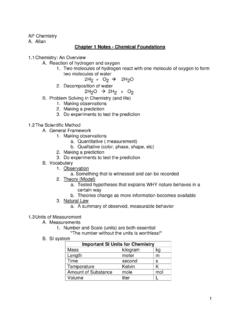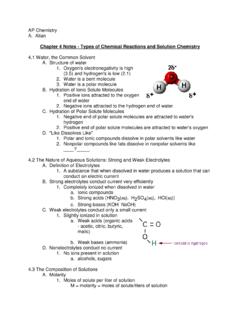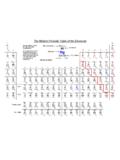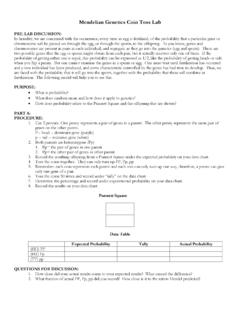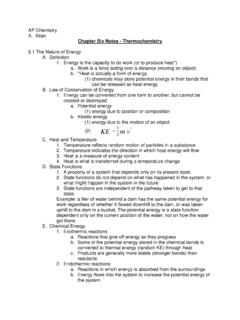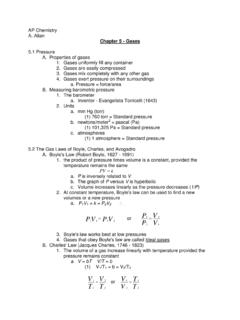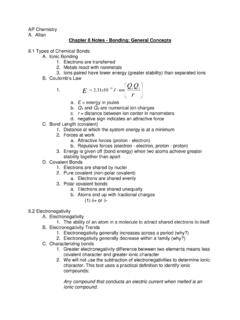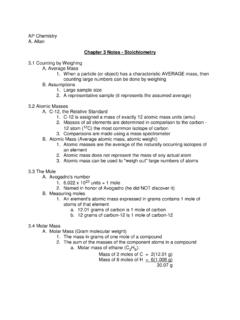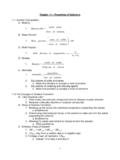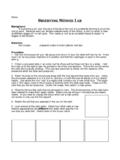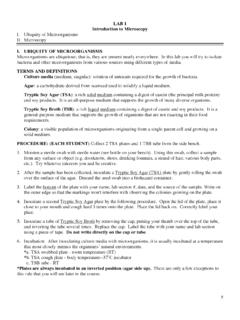Transcription of Nervous System Lab - ScienceGeek.net
1 Nervous System Lab Introduction: The human Nervous System is composed of the brain and spinal cord (Central Nervous System , CNS) and the nerves which branch out from the CNS, the Peripheral Nervous System (PNS). Sensory neurons of the PNS carry information to the CNS. Signals from the brain are carried to motor neurons (PNS), which carry out responses by muscles. In this lab, you will be comparing the rate at which sensory neurons, working through the brain, can elicit responses via motor neurons. We will also be mapping out the density of sensory neurons on the skin. Purpose: To identify differences in the Nervous System based on reaction response time and nerve density. Part 1: Reaction time Part A Arm and shoulder. Each group will be equipped with a meter stick. Select a group member, and use the same person for ALL of the following tests in Part 1. Have the group member stand upright, with their arms extended straight out in front of the body, palms of the hands facing each other.
2 The palms should be 10 cm apart. Place the meter stick exactly in the middle of the palms, with the 50 cm mark at the TOP of the index finger. The meter stick should be oriented so that 0 end is down and the 100 end is up. Once you are organized, another group member will hold the top of the stick, and then let go. The meter stick's fall should be stopped by bringing the arms together to stock the fall of the meter stick. Record the distance that the stick fell by looking at the measurement lines on the meter stick that align with the index fingers as the palms hold the stick. Final position cm - cm = Distance traveled Repeat this process three more times, recording your data in the table you have on your lab. Part B Thumb and Index finger. Have the group member stand upright, with their right arm extended straight out in front of the body, with the thumb and forefinger separated by 10 cm. As before, place the meter stick at the 50 cm mark between the finger and thumb, with the 50 cm mark aligned with the top of the index finger.
3 Release the stick, and record the distance that the meter stick falls before the student catches it. Repeat this process three more times, recording your data in the table you have on your lab. Fall Distance in centimeters (cm). Trial #1 Trial #2 Trial #3 Trial #4 Average Part A . Arm and shoulder Part B . Thumb and forefinger Part 2: Mapping Nerve Endings Obtain two pins from your instructor. With these you will try to determine the distance between sensory neurons on several areas of the skin. You will also need a metric ruler, which the instructor will provide. You may use the same group member that you used for Part 1, or you may choose a different group member. Have them sit in a chair with their eyes closed. Touch (don't poke) the skin in each of the areas below with the two pins, beginning 1 cm apart. Move the pin heads toward each other, lifting and touching each time, until the person (eyes still closed) reports that they feel the sensation of only one pin touching them.
4 Record the distance between the pins in millimeters at which the person can no longer distinguish that there are two pins touching them, and feel only one. Repeat this three more times for each area of the body that you are to test. Distance between pins, in millimeters (mm). Trial #1 Trial #2 Trial #3 Trial #4 Average Pad of right index finger Back of upper arm Back of the neck Calculations Calculate averages for each of the measurements taken in this lab.
